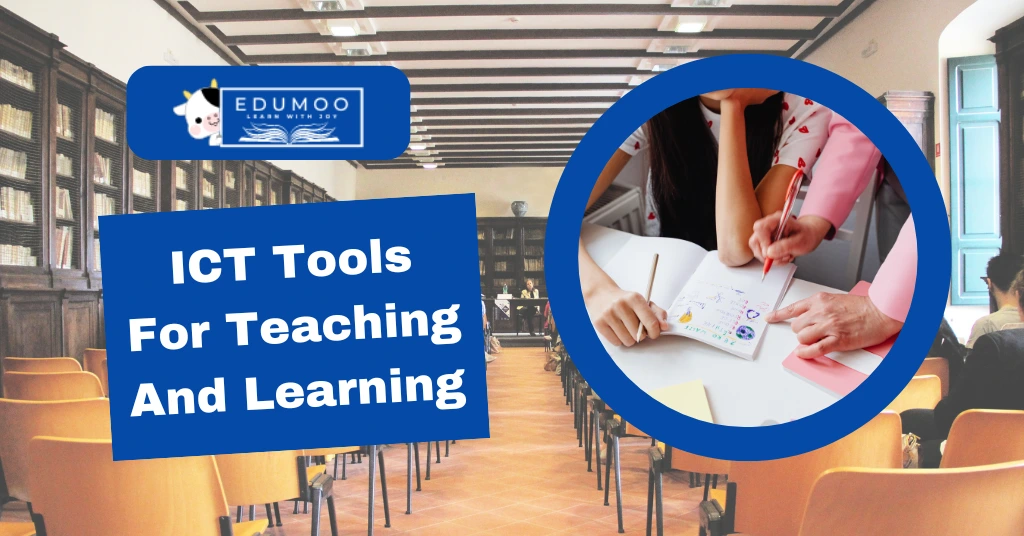In today’s world, technology is very important for education. Information and Communication Technology (ICT) encompasses all the tools and resources we use to communicate and share information. These tools can make teaching and learning more engaging, efficient, and effective. In this blog, we will explore various ICT tools for teaching and learning, discuss their benefits, and provide examples, including a table summarizing popular tools.
What Are ICT Tools?
ICT tools refer to technologies that aid in teaching and learning processes. They include hardware, software, and online resources designed to enhance the educational experience.
Types of ICT Tools
Hardware
- Computers: Laptops and desktops are essential for accessing information and resources.
- Tablets and Smartphones: These devices enable students to learn on the go, promoting mobile learning.
- Projectors and Smartboards: Visual aids help teachers present information in an engaging manner.
Software
- Learning Management Systems (LMS): Platforms like Moodle and Google Classroom facilitate course management and tracking of student progress.
- Presentation Software: Tools like Microsoft PowerPoint and Prezi allow teachers to create interactive presentations that capture student interest.
Online Resources
- Educational Websites: Websites like Khan Academy and Coursera provide free courses and valuable learning resources.
- Video Sharing Platforms: YouTube and TED-Ed offer educational videos covering various topics, enhancing understanding through visual content.
Benefits of Using ICT Tools For Teaching And Learning
Integrating ICT tools in education offers several advantages:
- Enhanced Engagement: Interactive content and multimedia keep students focused and interested in lessons.
- Personalized Learning: Technology allows for tailored educational experiences, catering to individual student needs.
- Access to Resources: Students can easily access a wide array of information online.
- Collaboration: ICT tools foster collaboration among students and between teachers and students, enhancing communication.
- Skill Development: Students develop essential digital skills crucial for success in today’s job market.
Examples of ICT Tools in Education
- Google Classroom
Google Classroom is a widely used Learning Management System (LMS) that helps teachers create, distribute, and grade assignments. It organizes class materials and encourages communication between educators and students.
Key Features: Assignment tracking, real-time feedback, and integration with Google Drive.
- Kahoot!
Kahoot! is an interactive quiz platform that makes learning enjoyable. Teachers can create quizzes, surveys, and discussions to engage students actively.
Key Features: Game-based learning and visual and auditory feedback.
- Zoom
Zoom has become an essential video conferencing tool for online learning. It enables teachers to conduct live classes and connect with students remotely.
Key Features: Video/audio communication and breakout rooms for group discussions.
- Edmodo
Edmodo is a social learning platform connecting teachers, students, and parents. It promotes collaboration, communication, and resource sharing.
Key Features: Safe and secure environment and discussion boards for students.
Table: Comparison of ICT Tools
| Tool | Type | Key Features | Best For |
| Google Classroom | LMS | Assignment tracking, real-time feedback | Organizing courses |
| Kahoot! | Quiz Platform | Game-based quizzes, interactive learning | Engaging students |
| Zoom | Video Conferencing | Video/audio communication, breakout rooms | Online classes |
| Edmodo | Social Learning | Collaboration, resource sharing | Teacher-student interaction |
Challenges of Using ICT Tools
While ICT tools offer numerous benefits, they also present challenges:
- Technical Issues: Internet connectivity problems can disrupt learning experiences.
- Training Needs: Both teachers and students may require training to utilize new tools effectively.
- Accessibility: Not all students may have access to the necessary technology, creating a digital divide.
- Over-reliance on Technology: Excessive dependence on technology can detract from traditional learning methods.
Solutions to Overcome Challenges
To tackle these challenges, educational institutions can take several steps:
- Provide Training: Offer workshops and resources to help teachers and students learn how to effectively use ICT tools.
- Ensure Accessibility: Equip students who lack resources with necessary devices and internet access.
- Combine Methods: Use a balanced approach that integrates both traditional teaching methods and ICT tools.
Integrating ICT Tools into the Classroom
Teachers can effectively integrate ICT tools into their lessons in various ways:
- Interactive Lessons: Utilize tools like Kahoot! for quizzes and polls to maintain student engagement.
- Flipped Classroom: Assign video lectures for homework and dedicate class time to discussions and activities.
- Collaborative Projects: Leverage Google Classroom for group projects, enabling students to collaborate and share resources seamlessly.
Examples of Integration
Example 1: Using Google Classroom
A teacher can create a Google Classroom for their course. They can post assignments, share resources, and provide feedback. Students can submit their work and ask questions directly through the platform, fostering a collaborative environment.
Example 2: Flipped Classroom with YouTube
A science teacher can assign a YouTube video on a specific topic for students to watch at home. In class, they can hold discussions and perform experiments related to the video content, enhancing comprehension and application of concepts.
Conclusion
ICT tools are revolutionizing the way we teach and learn. They enhance engagement, provide access to a wealth of resources, and facilitate collaboration. Although challenges exist, the benefits of using these tools far outweigh the drawbacks.
By integrating ICT tools for teaching and learning into the classroom, educators can create a dynamic and effective learning environment. As technology continues to evolve, it is essential for both students and teachers to embrace these changes and make the most of the opportunities they present.

